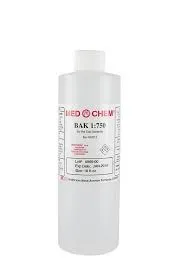An Overview of Poly Aluminium Chloride and Its Applications in Water Treatment
Understanding Poly Aluminium Chloride An Overview
Poly aluminium chloride (PAC) is an inorganic polymer widely used in various industries, particularly in water treatment processes. This compound plays a crucial role in coagulation and flocculation, essential steps in water purification and industrial applications. In this article, we will explore what PAC is, its chemical properties, applications, and the benefits it offers.
What is Poly Aluminium Chloride?
Poly aluminium chloride is a water-soluble chemical polymer made from the hydrolysis of aluminium chloride (AlCl3). The formula for PAC can be generally represented as Aln(OH)mCl(3n-m), where 'n' and 'm' denote the number of aluminum ions and hydroxyl ions, respectively. PAC appears as a white to yellowish powder or solution, depending on its concentration and form.
PAC is categorized into different types based on its basicity, which refers to the number of hydroxyl groups present. Typically, PAC has a basicity of between 40% and 90%. This characteristic allows it to be effective in various pH levels, making it versatile for different applications.
Chemical Properties
The chemical structure of PAC allows it to function effectively as a coagulant. Upon dissolution in water, it dissociates into positively charged aluminum cations. These cations neutralize the negatively charged particles in the water, promoting agglomeration and facilitating the formation of larger particles (flocs) that can be easily removed from the water.
The properties of PAC, including its high charge density and large molecular weight, contribute to its effectiveness as a coagulant. Unlike other traditional coagulants, PAC works efficiently in a wider range of temperatures and pH levels, making it a suitable choice for various water treatment scenarios.
Applications of Poly Aluminium Chloride
1. Water Treatment The most common use of PAC is in drinking water and wastewater treatment plants, where it helps remove suspended solids, colloidal particles, and organic matter. The coagulation process improves clarity and reduces turbidity in water.
what is poly aluminium chloride

2. Paper and Pulp Industry In the paper-making process, PAC is used as a retention aid and flocculant. It helps in improving the retention of fibers and fillers, thereby enhancing the quality of the paper produced.
3. Textile Industry PAC is employed in the textile industry for dyeing processes. It aids in the fixation of dyes on fabrics, improving the color quality and reducing water runoff.
4. Food Industry PAC is also used in the food sector, where it helps in the clarification of juices and beverages. Its ability to remove turbidity contributes to improved product aesthetics and shelf life.
5. Construction Industry PAC is utilized as a binding agent and stabilizer in cement and concrete applications, enhancing the durability of construction materials.
Advantages of Using PAC
- Efficiency Poly aluminium chloride is highly efficient, requiring lower doses than traditional coagulants like alum. This efficiency translates into cost savings for water treatment facilities. - Versatility PAC can be utilized effectively across a wide range of pH levels and temperatures, making it suitable for diverse environmental conditions.
- Reduced Residuals The use of PAC often results in lower quantities of residual sludge compared to other coagulants. This reduction is beneficial for disposal processes and contributes to environmental sustainability.
- Improved Water Quality The coagulation process facilitated by PAC leads to higher quality treated water, which is critical for both drinking water and industrial applications.
Conclusion
In summary, poly aluminium chloride is a vital chemical compound that plays an essential role in various industrial applications, especially in water treatment processes. Its unique properties, efficiency, and versatility make it a preferred choice over traditional coagulants. As industries continue to prioritize sustainable practices and improved water quality, the significance of PAC is likely to grow, solidifying its place in modern industrial applications. Understanding this compound is crucial for professionals in fields related to water treatment, environmental science, and industrial manufacturing.
-
Water Treatment with Flocculant Water TreatmentNewsJun.12,2025
-
Polymaleic AnhydrideNewsJun.12,2025
-
Polyaspartic AcidNewsJun.12,2025
-
Enhance Industrial Processes with IsothiazolinonesNewsJun.12,2025
-
Enhance Industrial Processes with PBTCA SolutionsNewsJun.12,2025
-
Dodecyldimethylbenzylammonium Chloride SolutionsNewsJun.12,2025





